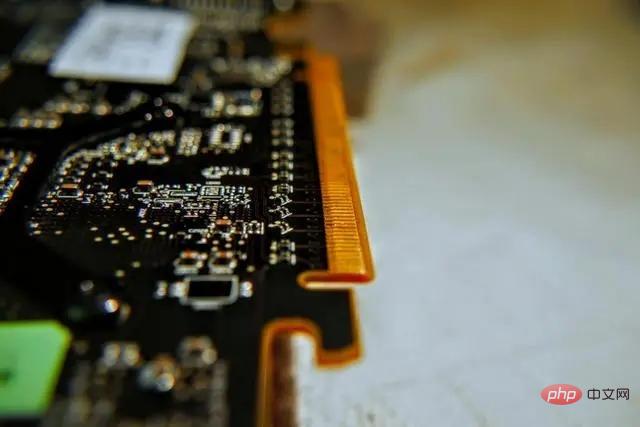
The pcie4.0 and pcie3.0 interfaces are different. They are two different versions of the PCIe standard. The difference between the two: 1. PCIe 4.0 provides faster data transmission speed, up to 16GT/s, which is twice that of PCIe 3.0; 2. PCIe 4.0 supports more bandwidth, up to 69.6GB/s. PCIe3.0 can only support up to 32GB/s; 3. PCIe4.0 supports more channels and can support more devices; 4. PCIe4.0 supports lower power consumption.

The operating environment of this tutorial: Windows 7 system, Dell G3 computer.
The interfaces of pcie4.0 and pcie3.0 are different.
PCI Express (PCIe) is a computer bus interface standard used to transfer data between a computer's motherboard and external devices. PCIe 4.0 and PCIe 3.0 are two different versions of the PCIe standard.

PCIe 4.0 is much faster than PCIe 3.0. It offers faster data transfer speeds of up to 16 GT/s, twice that of PCIe 3.0 (8 GT/s). This means that the PCIe 4.0 interface can transfer more data and complete tasks faster.
In addition, PCIe 4.0 also supports more bandwidth, up to 69.6 GB/s, while PCIe 3.0 can only support up to 32 GB/s. This means PCIe 4.0 can better support high-bandwidth applications such as video editing and 3D rendering.

In addition, PCIe 4.0 also supports more channels and can support more devices. This makes PCIe 4.0 more suitable for large rack-mounted servers and workstations.
PCIe 4.0 also supports lower power consumption, which is achieved through the use of more efficient signal processing technology. This means that the PCIe 4.0 interface can reduce power consumption while maintaining high performance.
In short, PCIe 4.0 is a faster, more efficient, and more scalable bus interface standard suitable for application scenarios that require high bandwidth and low power consumption. Its emergence will bring faster data transmission speeds and greater bandwidth, allowing more devices to work at the same time. This is very beneficial for improving work efficiency and speeding up task completion.
Summary: The difference between pcie4.0 and pcie3.0
1. In terms of transmission rate
The speed of pci-e4.0 to transmit data is higher It is much faster than 3.0, it can be said to be twice as fast. 4.0 has a two-way bandwidth of 32GB per second, while 3.0 can only reach 16GB per second.
2. In terms of bandwidth
PCIe4.0 ×16 bidirectional bandwidth reaches 32GB/s, which is almost twice that of PCIe 3.0.

3. In terms of performance,
pci-e4.0 is directly compatible with 3.0 devices, but 3.0 is not upward compatible. This is what is commonly said. backward compatibility. pcie4.0 is backward compatible with PCIe3.0 to meet the needs of more users; finally, it is based on large bandwidth, with more connections, and can connect more devices without worrying about performance degradation.
4. In terms of the number of connections,
pci-e4.0 has one higher bandwidth than two, so it can connect to more devices without worrying about performance degradation. But in fact, if you make a comprehensive comparison, especially in the process of playing games, the highest difference between the two should be about 1%, so in fact, compared to 3.0, the performance improvement of 4.0 can basically be ignored Not counted.
Extended knowledge:
PCIe 4.0 requires new hardware and drivers to support, so it cannot be used on older systems. At the same time, because PCIe 4.0 is not very common yet, not all devices support this standard. If you're upgrading hardware, you'll need to make sure your system can support PCIe 4.0 and that the required devices can support it.
For more related knowledge, please visit the FAQ column!
The above is the detailed content of Are pcie4.0 and pcie3.0 interfaces the same?. For more information, please follow other related articles on the PHP Chinese website!
 Introduction to hard disk interface types
Introduction to hard disk interface types
 Representation method of string constant
Representation method of string constant
 Introduction to the meaning of invalid syntax
Introduction to the meaning of invalid syntax
 Characteristics of relational databases
Characteristics of relational databases
 Common tools for software testing
Common tools for software testing
 Three mainstream frameworks for web front-end
Three mainstream frameworks for web front-end
 What to do if normal.dotm error occurs
What to do if normal.dotm error occurs
 What does DOS operating system mean?
What does DOS operating system mean?